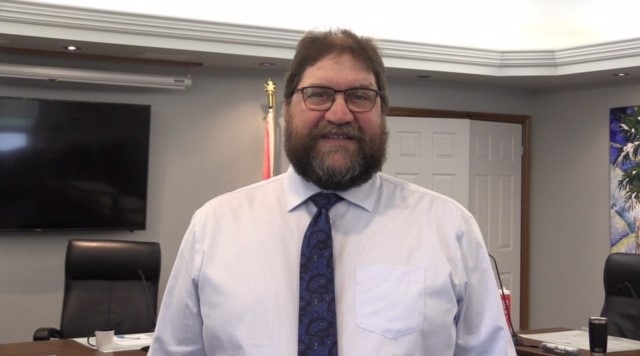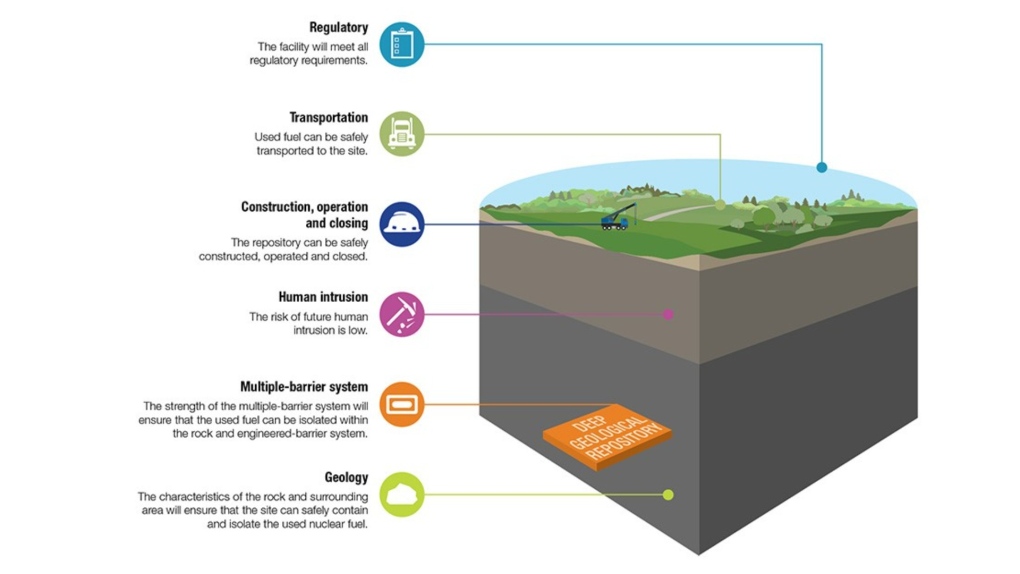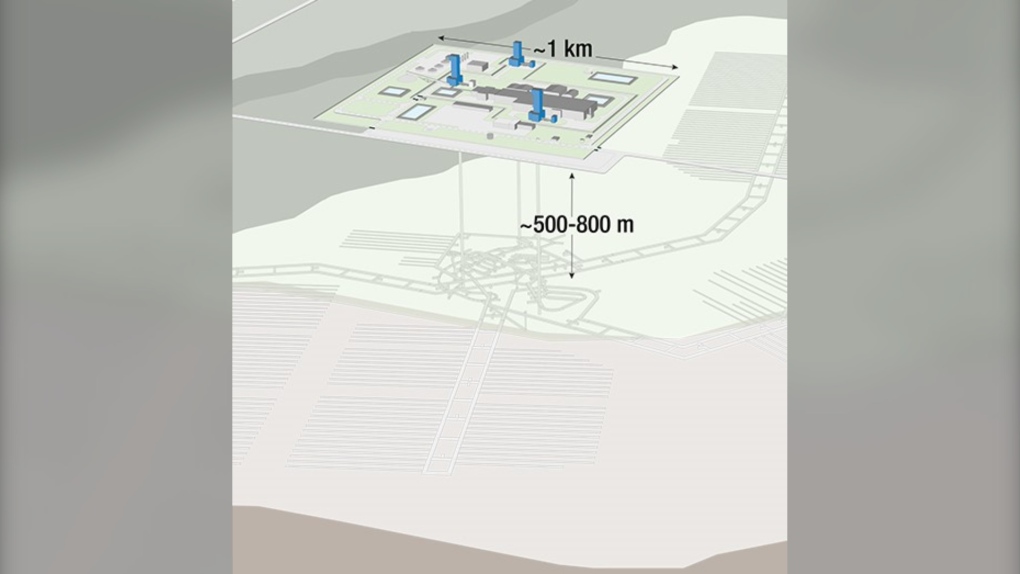'Final touches' being put on nuclear waste hosting agreement
Last December, Mayor Mark Goetz said he’d like to see a historical hosting agreement between the Municipality of South Bruce and the Nuclear Waste Management Organization in place by February of 2024 “because the later it gets, it pushes the referendum back further and further."
Fast forward to April, and there’s still no hosting agreement or contract in place that will lay out the details of how plans for a $26 billion underground facility to house Canada’s used nuclear fuel would proceed in the community, and how much the municipality would be paid to host it.
“We’ve worked the past 12 years getting to this stage, so all that information has to be brought together. It’s a 170 year project, so you want to make sure your I’s are dotted and your T’s are crossed,” said Goetz.
Goetz said the “final touches” are being put on the hosting agreement, and that it should be before council and the community “in the very near future.”
He still anticipates a fall vote by the community to decide whether South Bruce will or won’t be a willing host to as many as 5.6 million used nuclear fuel bundles that remain radioactive for centuries.
 Municipality of South Bruce Mayor Mark Goetz is seen in Teeswater, Ont. in April 2024. (Scott Miller/CTV News London)
Municipality of South Bruce Mayor Mark Goetz is seen in Teeswater, Ont. in April 2024. (Scott Miller/CTV News London)
“We’re very hopeful the referendum will be happening in the fall of this year,” said Goetz.
The only other community still in the running to host the underground facility — that will encompass nearly 1,500 below surface acres — is between Dryden and Ignace, in northern Ontario.
That municipality signed a hosting agreement with the Nuclear Waste Management Organization (NWMO) in March, which would see the municipality pay $170 million over the next 80 years.
Included in that is a $0.50 “emplacement fee” for every used fuel bundle deposited into the underground facility, known as a deep geological repository or DGR.
 Graphics show what a deep geological repository to store Canada’s used nuclear fuel bundles might look like. (Source: Nuclear Waste Management Organization)“The concerns I’ve seen are, that at the end of the day, the adaptive plan basically gives the Nuclear Waste Management Organization free range. Also, your municipality must support it, and if they decide to make changes, it doesn’t sound like the community has very much say,” explained Michelle Stein, who lives near the proposed South Bruce DGR project and is co-founder of No Nuclear Waste-Protect our Waterways.
Graphics show what a deep geological repository to store Canada’s used nuclear fuel bundles might look like. (Source: Nuclear Waste Management Organization)“The concerns I’ve seen are, that at the end of the day, the adaptive plan basically gives the Nuclear Waste Management Organization free range. Also, your municipality must support it, and if they decide to make changes, it doesn’t sound like the community has very much say,” explained Michelle Stein, who lives near the proposed South Bruce DGR project and is co-founder of No Nuclear Waste-Protect our Waterways.
Stein, who lives very close to the proposed project area just north of Teeswater, is worried about the impacts on her and her neighbours who might move if the DGR moves forward.
“My question is, did council even try to get something for those of us who are in this zone that we can at least start somewhere else if we don’t want to be beside a radioactive experiment,” she said.
Goetz said South Bruce’s hosting agreement will come before council as soon as it’s ready before being released to the public. He’s still confident South Bruce residents will vote on the project’s fate this fall.
 Graphics show what a deep geological repository to store Canada’s used nuclear fuel bundles might look like. (Source: Nuclear Waste Management Organization)
Graphics show what a deep geological repository to store Canada’s used nuclear fuel bundles might look like. (Source: Nuclear Waste Management Organization)
CTVNews.ca Top Stories

Air Canada walks back new seat selection policy change after backlash
Air Canada has paused a new seat selection fee for travellers booked on the lowest fares just days after implementing it.
Province boots mayor and council in small northern Ont. town out of office
An ongoing municipal strike, court battles and revolt by half of council has prompted the province to oust the mayor and council in Black River-Matheson.
3 law officers serving warrant are killed, 5 wounded in shootout at North Carolina home, police say
Three officers on a U.S. Marshals Task Force serving a warrant for a felon wanted for possessing a firearm were killed and five other officers were wounded in a shootout Monday at a North Carolina home, police said.
'Shocked and concerned': Calgary principal charged with possession of child pornography
A Calgary elementary school principal has been charged with possession of child pornography, authorities announced Monday.
Health authority confirms cockroaches at B.C. hospital, insists they 'do not bite'
The Vancouver Island Health Authority is downplaying what staff describe as a cockroach infestation in a medical unit of Saanich Peninsula Hospital.
Toronto police arrest 12 people, lay 102 charges in major credit card fraud scheme
Toronto police say 12 people are facing a combined 102 charges in connection with an investigation into a major credit fraud scheme.
Winner of US$1.3 billion Powerball jackpot is an immigrant from Laos who has cancer
One of the winners of a historic US$1.3 billion Powerball jackpot last month is an immigrant from Laos who has had cancer for eight years and had his latest chemotherapy treatment last week.
Britney and Jamie Spears settlement avoids long, potentially ugly and revealing trial
Britney Spears and her father Jamie Spears will avoid what could have been a long, ugly and revealing trial with a settlement of the lingering issues in the court conservatorship that controlled her life and financial decisions for nearly 14 years.
WATCH 'Double whammy': What happens if you don't file your taxes by the deadline
The clock is ticking ahead of the deadline to file a 2023 income tax return. A personal finance expert explains why you should get them done -- even if you owe more than you can pay.





























